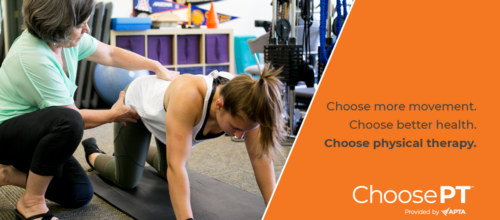
Choose Physical Therapy for Safe Pain Management
No one wants to live in pain. But no one should put their health at risk in an effort to be pain free.
Doctor-prescribed opioids are appropriate in some cases, but they only mask the pain – and opioid risks include depression, overdose, and addiction, plus withdrawal symptoms when stopping use. That is why the CDC recommends safer alternatives such as physical therapy to manage pain.
Physical therapists (PTs) treat pain through movement, hands-on care, and patient education. By increasing physical activity you can also reduce your risk of chronic diseases.
Why Physical Therapy for Pain Management?
- Physical therapists treat pain through movement.
- Physical therapy “side effects” include improved mobility, increased independence, decreased pain, and prevention of other health problems through movement and exercise.
- Physical therapy is effective for numerous conditions, and the CDC cite “high quality evidence” supporting exercise as part of physical therapist treatment for familiar conditions like low back pain, hip and knee osteoarthritis, and fibromyalgia.
Other Reasons to Choose Physical Therapy:
- Alternative to surgery
- Physical therapy has been found to be as effective as surgery for conditions including meniscal tears and knee osteoarthritis, and rotator cuff tears.
- Individualized treatment
- Physical therapist treatment plans are tailored to each person’s needs and goals.
- Identification of potential risks
- Physical therapists can identify additional health issues, beyond what the patient initially reports, thereby improving a person’s overall health and quality of life.
- Participate in your care
- Being an active participant in your recovery process can have a positive effect on your success.
Tips to Manage Pain:
- Work with your PT to understand your pain.
- PTs play a valuable role in the patient education process, including setting realistic expectations for recovery with or without opioids. This allows you to take a proactive approach to pain management.
- Keep moving.
- An active lifestyle that is appropriate for your condition can help manage symptoms and decrease or eliminate pain. The body was built to move, and doing so regularly can help improve quality of life. PTs prescribe exercise specific to your condition, needs, and goals.
- Don’t wait.
- If you experience an injury or develop the onset of pain, seeing a PT early on can help address and manage your symptoms.
Source:
www.choosept.com
